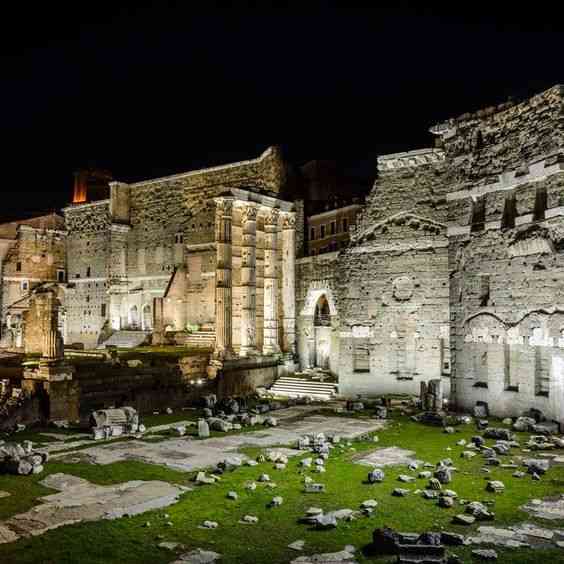The Roman commander Pompey came to the region and occupied it and annexed it to the state of Syria, then ended up at the hands of the Emperor Trajan divided between the Arab state and the state of Syria, after he was able to defeat the Nabatean kingdom in 106 AD.[1]
It is believed that it was only a formal alliance, or a political alliance of some Roman (formerly Greek) cities, through which various activities such as trade, cultural exchange and military cooperation were involved, so there is no precise definition of what the Decapolis alliance is.
Some researchers also believe that it is merely a geographical definition of these cities without any being that there are any administrative or political ties, but what unites them is the language, the location, the culture, and the political situation.
The cities of the Decapolis are considered a gathering point for Roman and Greek culture in the midst of an ocean teeming with Semitic culture (Judaism, Aramaic, and Nabateans), and the location of these cities is northwest of Jordan, northeastern Palestine, and southern Syria (with the exception of Damascus, the farthest north).
The word Decapolis appeared twice in the Gospels, a geographical region, in the writings of Josephus (an author of a Jewish historian and soldier who lived in the first century AD) of the first century AD.[2]
The Roman writer Pliny mentioned the names of the cities of the Decapolis as follows:
Philadelphia
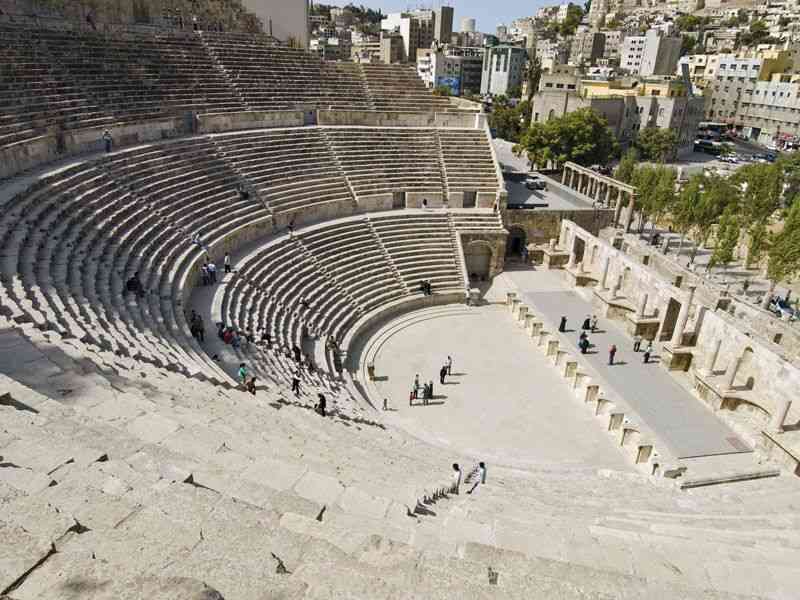
Today it is known as Amman, the capital of the Kingdom of Jordan, and it was called in the past, Philadelphia, and the name Philadelphia came in the Latin language from two syllables: Philae, meaning love, and Wudelphius, meaning brothers.adelphia [2]
Dion
Today it is known as Tell Al-Ash'ari and is located in the south of the Republic of Syria.
Canatha
Qanawat, Kanatha, or Kantha is a town in Syria located north-east of the city of As-Suwayda in the Syrian Republic.
Raphna
It is located southwest of the city of Daraa in southern Syria, on the Jordanian border
Damascus
The capital of Syria, one of the oldest cities in the world, with a long history spanning nearly eleven thousand years
Gerasa
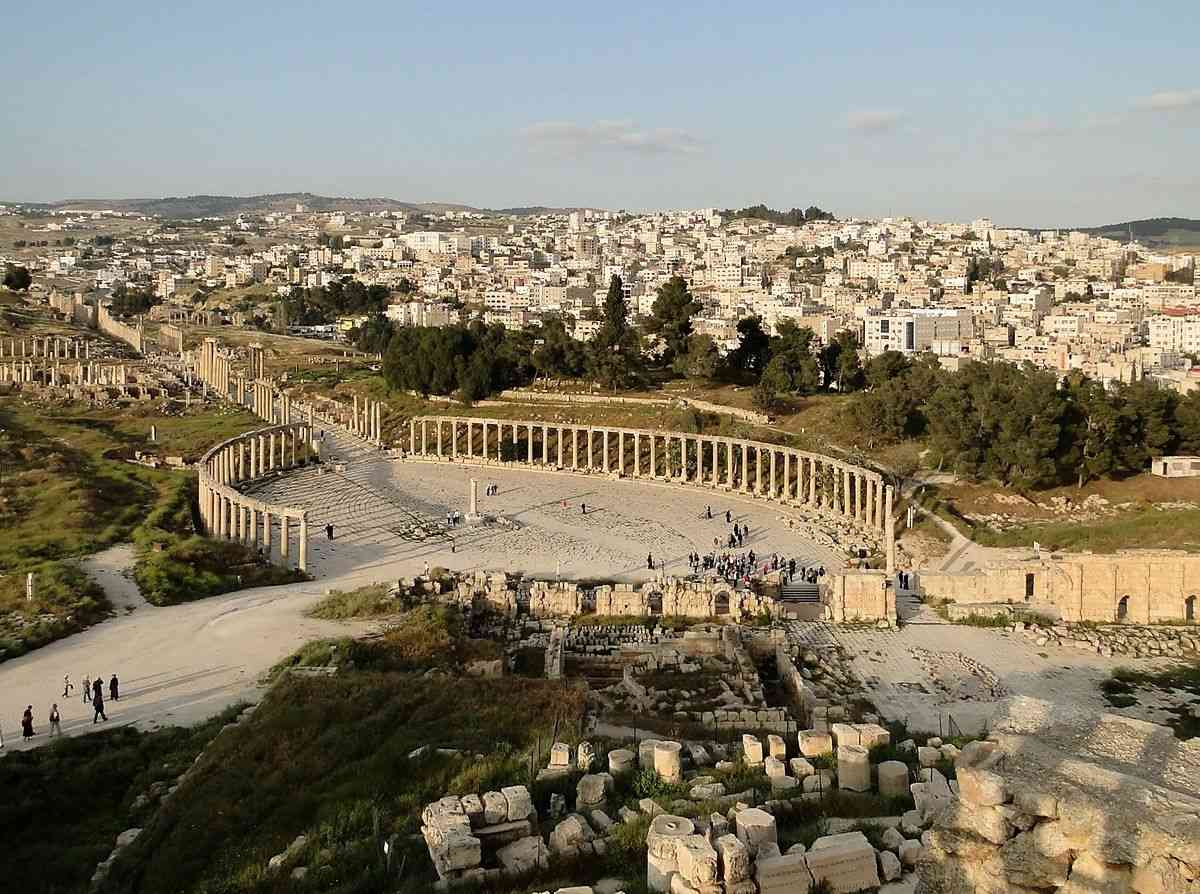
A city located in the north of Jordan, containing a lot of Roman antiquities, and it is called the City of a Thousand Columns due to the presence of the archaeological pillars Street in it.
SkythToday, it is located in occupied Palestine, and it is one of the oldest cities in Palestine. Its inhabitants are mostly Jews, after the Palestinian Arabs were displaced from it in the 1948 war.opolis :
Hippos (Sussita)
A town in the city of Irbid in Jordan
Gadara
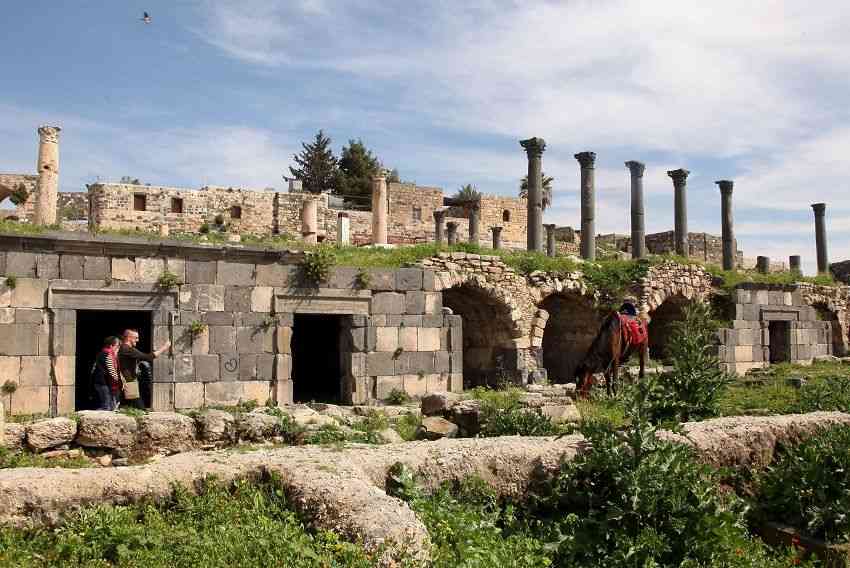
A Jordanian town in the city of Irbid, characterized by its ancient Roman ruins
pella
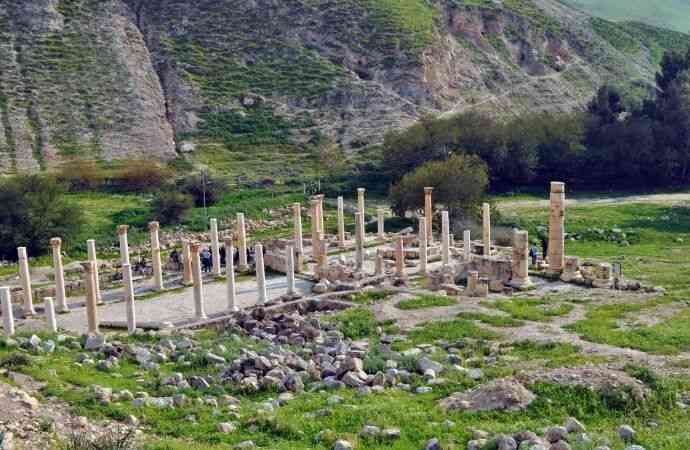
A Jordanian town located in Irbid, in the north of the Hashemite Kingdom of Jordan, and was named "Pella" according to the city which Alexander the Macedonian was born.
But Ptolemy (mathematician, astronomer, geographer, astrologer, and poet Epigrama in Greek anthology) said that it reached in number 18 Greek / Roman cities, and for example the city of Abila was always classified with the group of cities of the Decapolis.
As for the establishment of these cities, all of these cities were re-established in the Hellenistic era (a period in ancient history in which Greek culture possessed many aspects of civilization) and some of them were founded by the Seleucids (a Hellenistic dynasty that goes back to the founder of the ruling family of the Seleucid state, Seleucus I, one of the leaders of the army of Alexander the Great) and some of them were founded under Ptolemaic rule (a family of Macedonian origin that migrated to Egypt after the death of Alexander the Great, taking its name from Ptolemy).
When the next Pompey came, he re-established these cities (the Alliance of the Decapolis), and the history of Pompeii became the history of these cities and this alliance (64 BC).
And when the Roman state decided to spread its culture in the east of the empire, it encouraged the development of these cities, and gave them some autonomy within the Roman Empire. These cities were considered autonomous, and free.
Cities were re-planned based on Roman architecture, temples and public buildings also took on a Roman character, and roads were designed as means of commercial connection between these cities, which contributed to making them look like an alliance.
The use of the word Decapolis ended after the Emperor Trajan defeated the Nabataean Kingdom (which some believe that the alliance was established to stop its progress) in the early second century AD by adding the Arab state to the Roman states,And he annexed these cities to the Arab states and the wilaya of Syria and Palestine.
In spite of this, the region continued to use the Pompeian calendar and settlement continued in these cities in the late Roman era, the Byzantine era, the Islamic era, and even today.Also ,historians and scholars of revolution continued to use this term.
Sources
[1]Origin of naming
https://www.britannica.com/place/Decapolis-ancient-cities-Palestine
[2]st-takla.org \The website of Anba Takla Haymanot
[3]: Copyrights 2010-2020 Almaany.com,
https://www.almaany.com/ar/name/%D9%81%D9%8A%D9%84%D8%A7%D8%AF%D9%84%D9%81%D9%8A%D8%A7/

